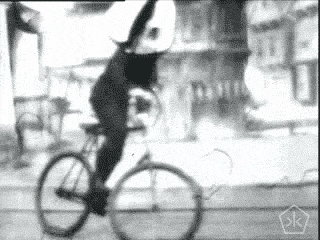An Evolved Form of Community Engagement
Community engagement is essential for creating infrastructure and services that meet people's needs. But it needs a major upgrade. Shared Streets version 1.0 showed us a better way, what we're calling "experiential community engagement."
The typical community engagement process involves a Gantt chart, public meetings, a few signs, social media posts, surveys, and an interactive map. Here's the current process being undertaken for Shared Streets version 2.0.
Only a tiny percentage of people who are energized about the issue participate in the process. 142 participants in Public Meeting #1 for Shared Streets v2.0 -- a vast, citywide program -- equals .02% of Denver residents. This creates an obvious sampling bias.
The >99% of people who don't participate in the process aren't to blame. "Indifference," "disengagement," and "apathy" are all just cover for a process that needs to be upgraded. Indeed, it's a process that produces outputs like this:
There are many reasons why people don't participate: they don't find out about public meetings, they don't use social media, they work late hours, they have kids to take care of, they don't feel comfortable in settings where things get confrontational, they don't like speaking in public, they don't speak English, they have limited access to technology or aren't tech savvy and find it difficult to use Zoom and map crowdsourcing tools like this:
Should those people's voices be excluded? Clearly not. But they are.
The flaws in community engagement go deeper, because even if everyone were to participate, the process relies on assumptions that defy human psychology. Chief among them is a misconception that people are able to accurately predict how they will act in the future. Questions like, "Where will you use a bike lane?" or, "What materials will make you want to roll here?" place unrealistic expectations on participants to accurately predict their future behavior.
This is a cognitive bias called the value-action gap and it's defined as, "The difference between what people say and what people do." It could also be described as the Green Eggs and Ham Principle.
Marketers have known for years that asking people what they would like is a terrible predictor of how they'll actually behave in the future. Just ask the people behind New Coke, which focus groups loved and which then flopped when it hit the market.
Experiential Community Engagement
Shared Streets v1.0 showed us that a more equitable and scientific way to do community engagement is to base it on lived experience.
Through short-term demonstration projects, we can give people the opportunity to experience the thing we're thinking about building. And because the thing exists in the real world, even if only temporarily, 100% (or certainly a huge proportion) of people for whom it might be relevant have the opportunity to experience it -- because it's there in front of them, on their streets for them to use.
Experiential community engagement allows us to observe actual behavior quantitatively and collect qualitative feedback based on real experience. We're able to learn what works and what doesn't. And when something doesn't work, we can call it a hard-won lesson and come back with an improved demonstration based on what we learned. As Thomas Edison said, "I have not failed, I've just found 10,000 ways that will not work."
Experiential community engagement can also ensure that we only spend millions of taxpayer dollars on permanent infrastructure when we have a high degree of confidence that it is going to produce the outcomes we seek.
Shared Streets were wildly popular in most places. But can you imagine if the City had gone to people and asked, "Would you like a bunch of temporary barricades on your street for two years?" No, I most certainly do not like green eggs and ham.
Denver's city plans have stated for years that we will have a complete high-comfort rolling network that anyone can use. But we still don't have it. Why? Because even though massive planning undertakings have determined that we're going to do it, we continue to run an outdated and redundant community engagement process on every inch of the network.
Shared Streets showed us that we can and must evolve towards a more inclusive, unbiased, and experiential form of community engagement.















